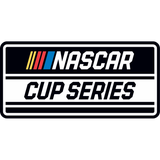
Willy T. Ribbs took to the track and always fought back

Willy T. Ribbs never felt accepted in the NASCAR world. That didn't prevent him from racing the wheels off his car, no matter what group in which he was competing.
Stock car racing, in its infancy, was an outgrowth of liquor bootlegging during prohibition, which is to say it was a sport created and mastered by southern white guys, which is to say that for a long time it did not often attract, or go out of its way to accept, people who did not fit that description.
Which is to say that when Willy T. Ribbs started routinely referring to NASCAR as “Neckcar,” “al-Qaida,” or “the WWE,” he was expressing something a lot of other non-southern white male drivers and racing fans must have felt.
Ribbs was once asked why he hated NASCAR. “I feel the same way about them that they do about me,” he said.
NASCAR folk couldn’t be blamed for bristling about that. In terms of accepting blacks, the sport was only two years behind the NBA , which didn’t have any black players until 1950. Wendell Scott became NASCAR’s first black driver in 1952. Unlike in the NBA, that was not the beginning of a radical shift in the racial makeup of the league.
Certainly the reasons for that are numerous, and complex, and to broadly paint it as a result of racism is a gross oversimplification. In any case, Willy T. Ribbs did not feel accepted there.
Trouble was, it’s not like there was any profoundly more inclusive circuit for a talented black driver to race in. He went to Formula One in 1986 -- and broke the color barrier in doing so.
That was 11 years into his professional racing career. In high school, he had moved to Europe in 1975 to drive in the Formula Ford series, won it, and moved back to the United States. In 1978, the president of Charlotte Motor Speedway picked Ribbs to drive a Winston Cup car in the World 600, but Ribbs missed two practice sessions and was arrested for driving the wrong way down a one-day street, so they put in this Dale Earnhardt kid.
Ribbs eventually returned to NASCAR in 1986, running three races in what is now known as the Sprint Cup, but performed poorly. By then, his heart was in IndyCars.
He qualified for the Indy 500 in 1991 – and broke that event’s color barrier, too.
Twenty years later, Ribbs formed Willy T. Ribbs Racing in a campaign for Chase Austin, a mixed-race driver from Kansas with a background in stock cars.
“When I heard he was coming to IndyCar,” he said, “I thought this was the best move for his career.”





